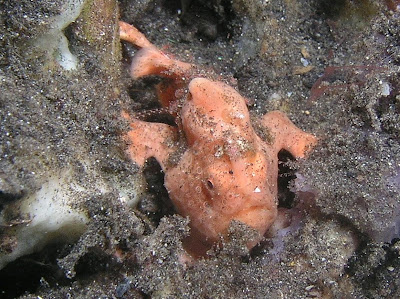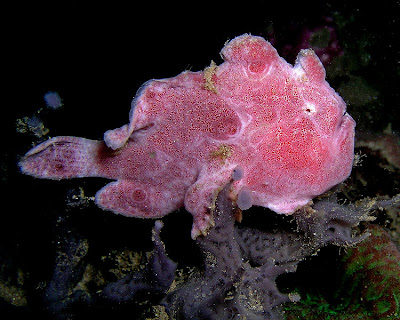.
They are generally small fish, less than 10–20 cm (3.9–7.9 in) in length, with large globose heads. They can be distinguished from other anglerfish by the three extended dorsal fin spines on their heads. The first dorsal spine is modified as a fishing lure to attract prey. The lure consists of the illicium (the spine) and the esca (the bait), and may resemble a worm, crustacean, or small fish. Frogfishes do not swim in the conventional way; instead, they "walk" on their pectoral fins or use 'jet propulsion' (forcefully expelling water from the small opercular opening generally behind and below the pectoral fins).
.
They are mostly bottom-dwelling fish, typically living amongst coral, at up to 100 metres (330 ft) depth, where they lie in wait for prey. They are able to change their colour to match the background with high precision, and their camouflage is further aided by numerous warts and filaments on their skin, giving them an appearance similar to rough coral.
.
The Sargassum fish, Histrio histrio, is unique among frogfish in that it is endemic to and clings on floating Sargassum weed.
.
.
.
.
.
.
.
.
.
.
.
.
.
.
.




